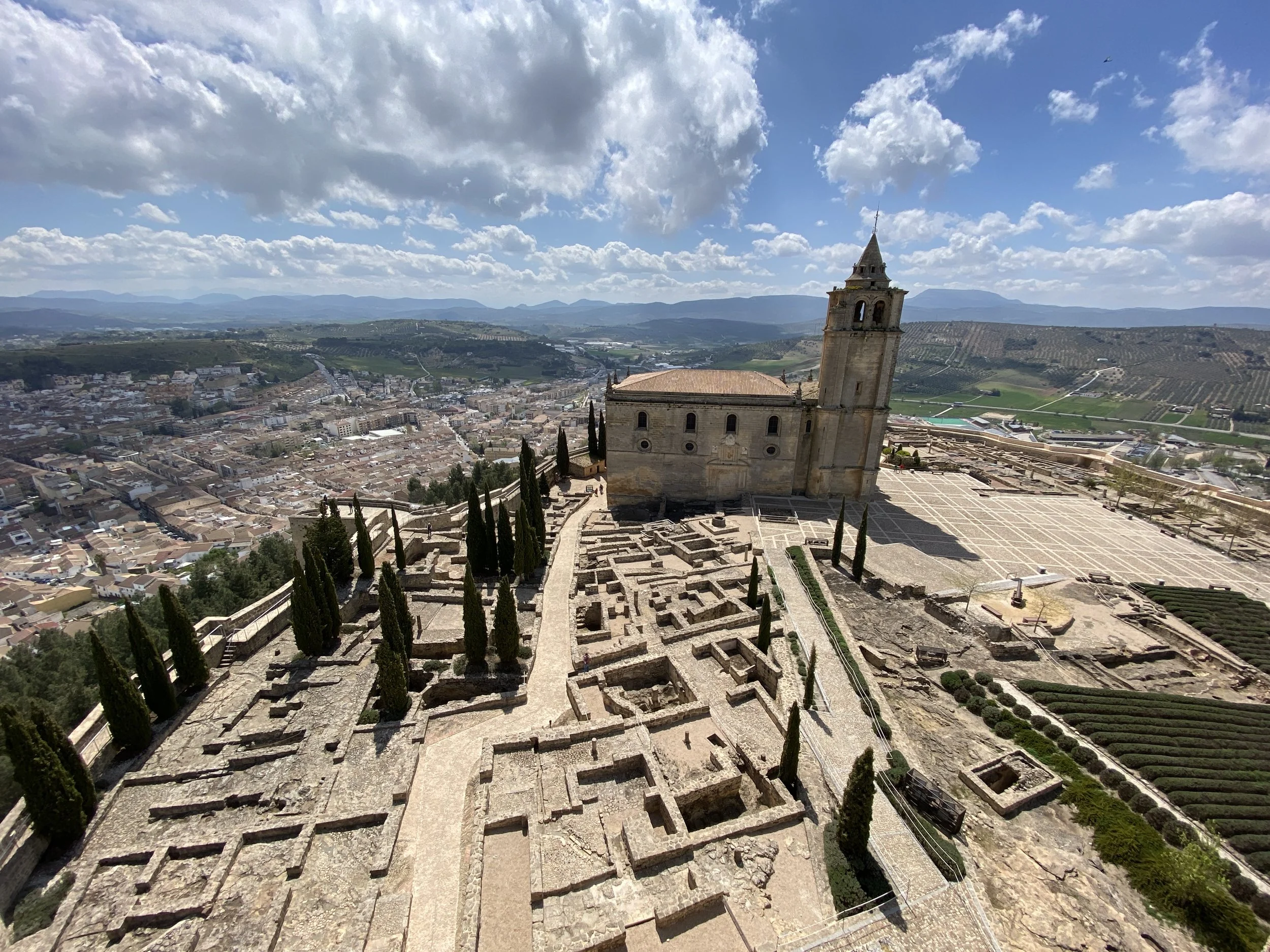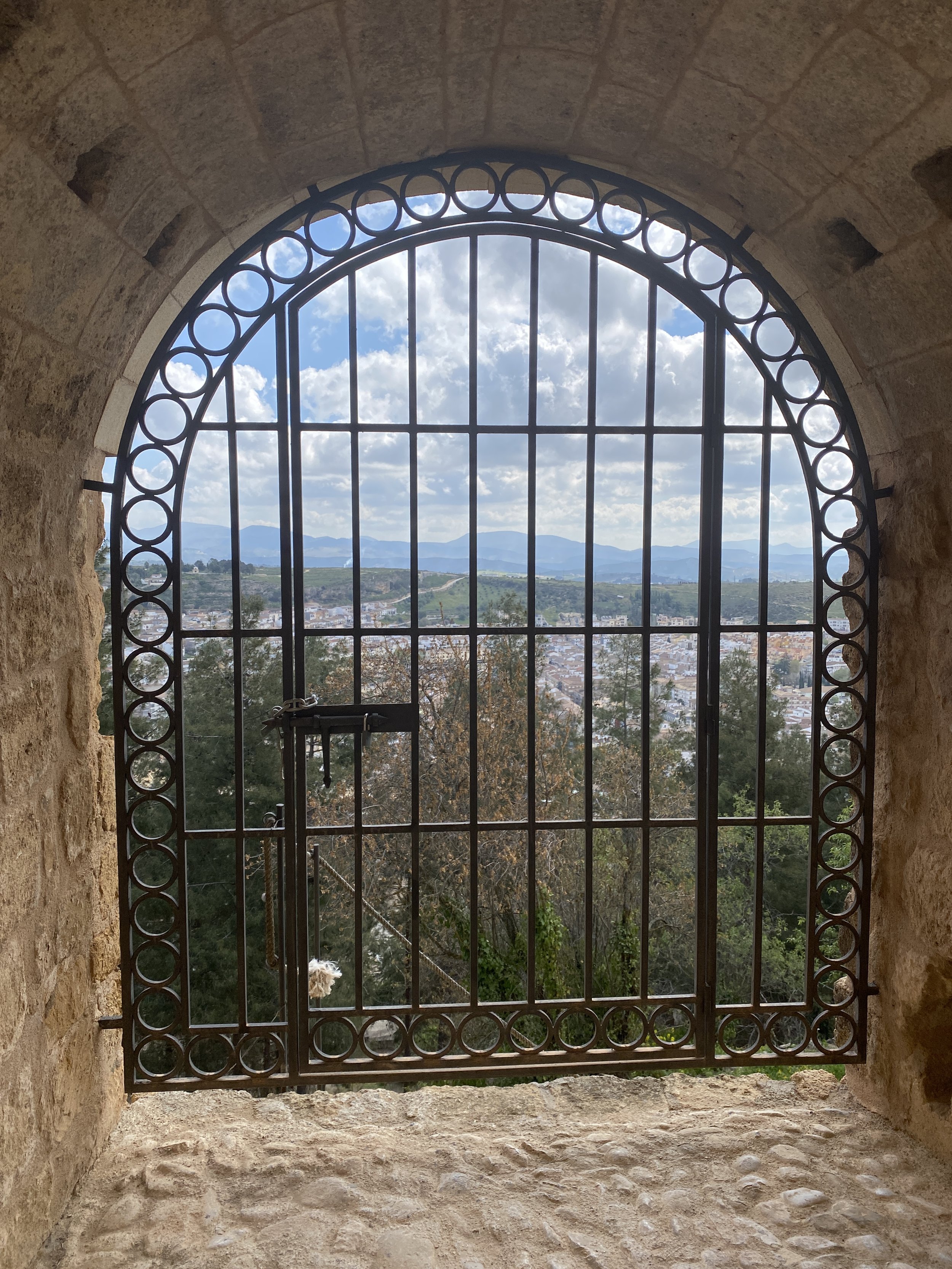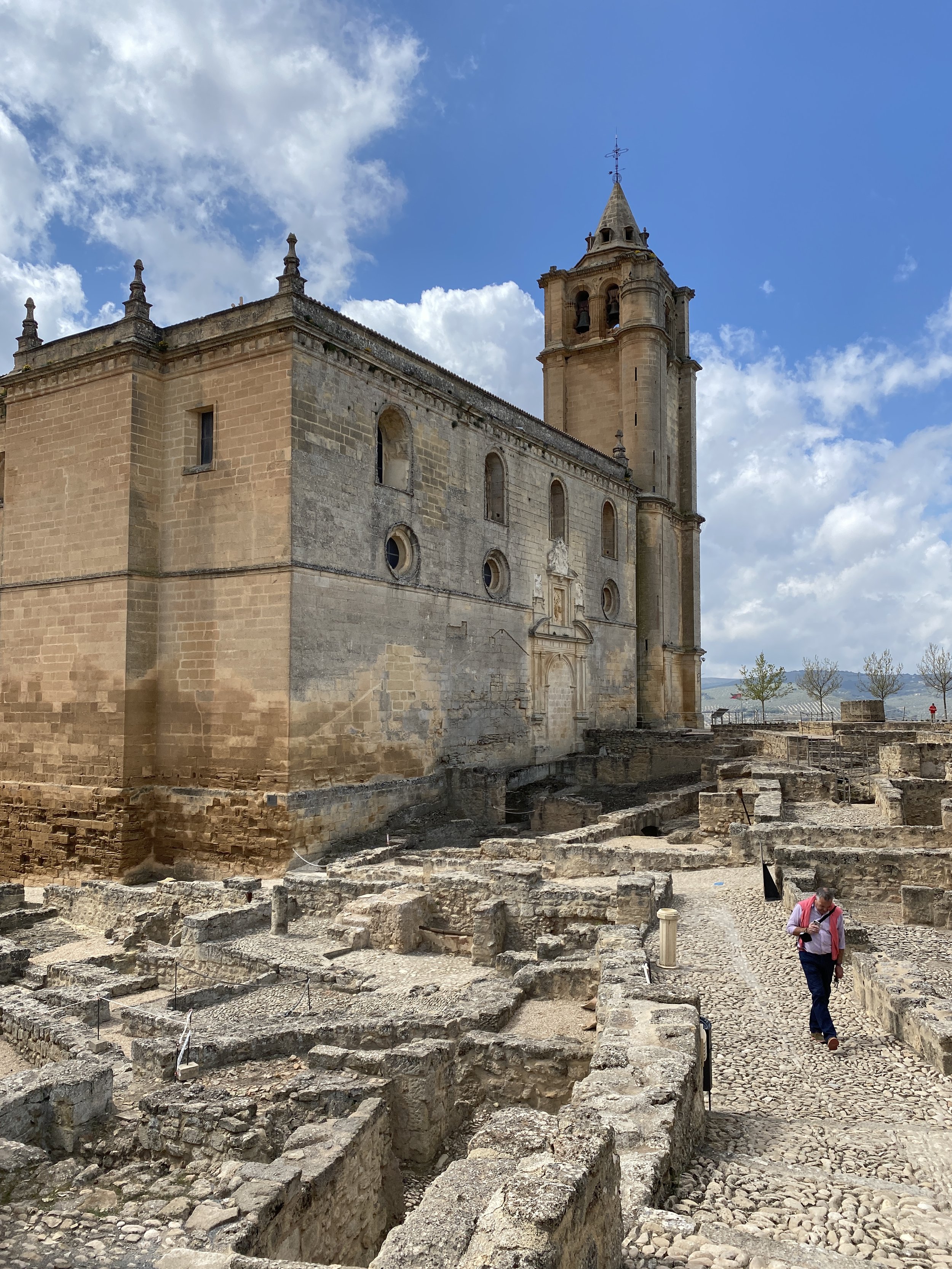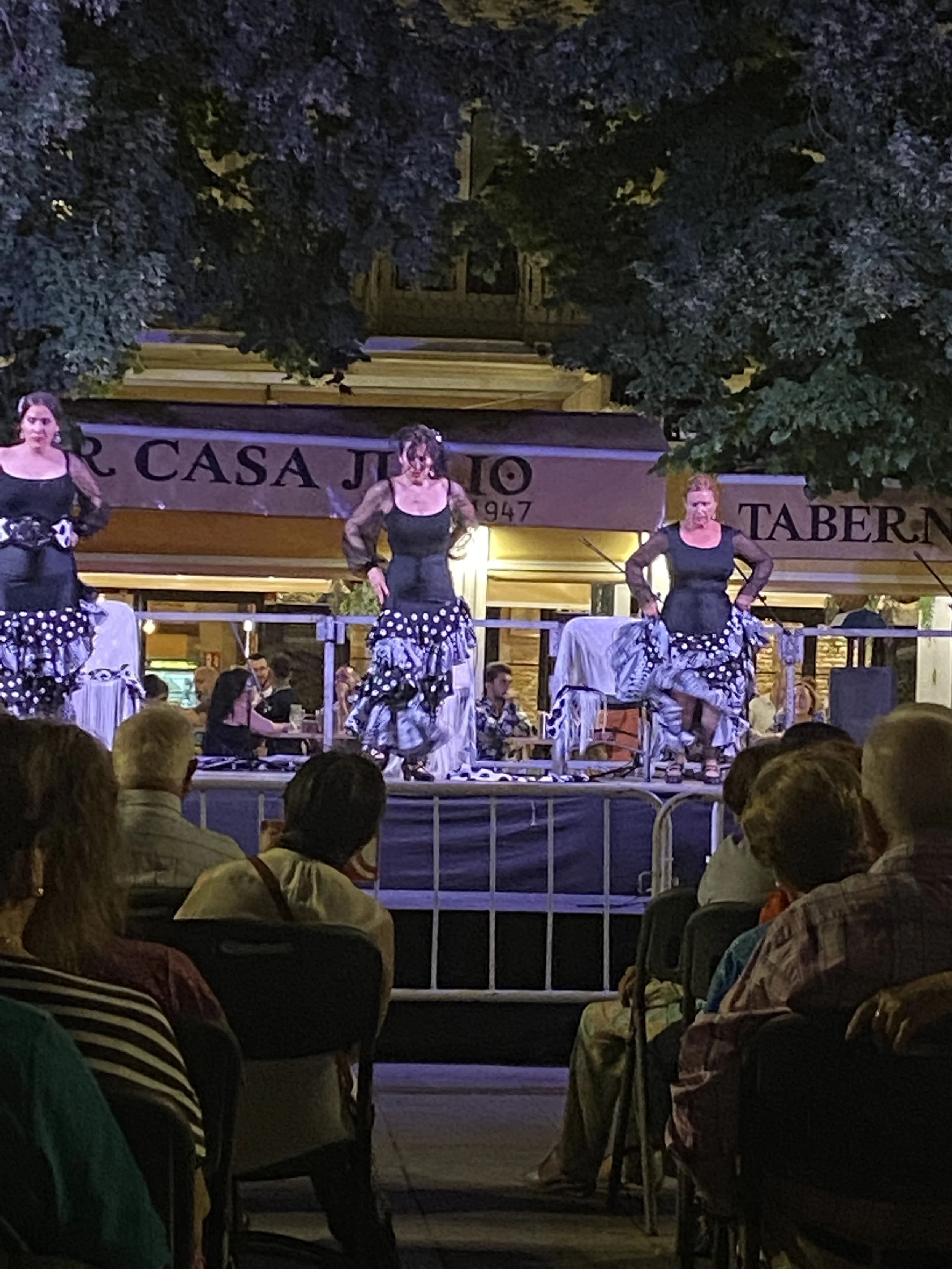A Fortress on our Doorstep and Asparagus from Heaven
Isn’t it always the way that when there is something of historic value right on your doorstep, it is all too easy to overlook it?
Due to circumstances over the past two years, Andrew and I have been unable to go out and about as much as we normally would, and we have missed exploring Andalucia. Now that the opportunities are opening up again, we find our diary increasingly filled with guest reservations at Casa Higueras, and with little time to just get in the car and disappear for a day trip. However, we decided that these were just excuses and we really ought to get back on the proverbial bike and start exploring again.
It made sense to start close to home and visit the Fortaleza de la Mota in Alcalá la Real, our nearest commercial town. For one reason or another, we have started nipping into Alcalá on an increasing number of occasions. Alfie’s vet is in Alcalá, and we have discovered a number of extremely useful businesses: two great butchers for our Christmas meats; a photography studio where I get paintings photographed to be sent to the printers; a very reasonably-priced picture framers; the best churros this side of the Zambezi. Sitting above the town is the rather beautiful Fortaleza de la Mota, and we have said on many an occasion that we must go and visit it, and yet…oh, procrastination!
We had a recent gap in between guests recently, and some lovely spring-like weather, so we hopped into the car and became tourists for the day. As with so many such excursions, our expectations were exceeded in more ways than one and we had a really lovely day, one during which we could immerse ourselves in the beauty of our surroundings and take a moment to relax.
From a distance, the fortress looks like many other fortresses but punctuated by an impressive church tower and a stolid cubic Alcazaba so reminiscent of the architecture of the Alhambra. However, this humble exterior view from afar belies the extent of the site and the great historic, architectural and archaeological interest of the contents.
The fortress is one of a group in Europe’s most Castle-dense province. Outside Andalucia, and possibly outside the whole of Spain, Jaén Province is something of a poor relation. It doesn’t boast a city like Sevilla or Córdoba. It can’t lay claim to The Alhambra, or a stretch of wild coastline, or a ski resort in the stunning Sierra Nevada. Yet it doesn’t need such celebrity, and you only need to look beyond the acres upon acres of olive trees to find some of Southern Spain’s most bloody history and spectacular natural landscapes. Before the pandemic, we escaped for a day or two to the breathtakingly beautiful Despeñaperros Natural Park, and made a promise that we’d be back to search for elusive lynx. The castles that dot this wild landscape bore witness to many of the battles between the Christians and the Moors and played a role in the Peninsula War (1807 - 1814). We rather accidentally stumbled upon another of the castles when we visited Despeñaperros, and we stayed in Baños de la Encina - the Castillo de Bury Al-Hammam or Burgalimar Castle in this small town is remarkably well preserved, and you can read about our trip to this corner of Jaén in a previous post, ‘Where the Wild Things Are’.
I’m digressing….we are in Alcalá la Real and the road to the Fortaleza takes the visitor around the back of the town and up the hill to a neat little car park. The fortress has been extremely sympathetically restored without turning the building into a lego-like reconstruction of what the castle may have looked like when a settlement was first created here in 713 by the Moors, and then extended in the 12th and 13th Centuries. We have seen restoration ‘gone wrong’ in the shape of Íllora Castle which looks far too uniform and building-block-like following its own restoration. Moclín Castle is on the verge of receiving more investment for restoration, and there is much debate surrounding the nature of this restoration. When you look at what has been achieved in Alcalá, this gives a good indication as to how to approach such a sensitive project. The church at the centre of the fortress is in fabulous condition, as is the military Alcazaba defensive stronghold. The village, within the walls of the fortress, is a series of foundation walls, walkways and lower walls, and no attempt has been made to try to reconstruct these. It’s not needed - the visitor can see exactly how these buildings were used, where timber beams once existed to support upper floors. Large tinajas sat in the floors of bars, and the floors of houses were made of thin terracotta bricks set end on in a herringbone pattern. The church that still stands on the site was built over the period from 1517 to 1627 and beneath the floor the tombs of many residents remain, testament to the more recent 500 year period in the fortress’ history.
What we are trying to say is that a fortress doesn’t have to be restored to within an inch of its life for a visitor to understand the history of the place, or to appreciate the architectural integrity and archaeological importance. I am far more excited by the stories from our good friend, Francisco Milena, about ghosts haunting our own Castillo de Moclín, and the hidden tunnels that run from one side of the hill, beneath the castle and out the other side. So it is with the Fortaleza de la Mota. The restoration works have made the site safe to visit and easy to navigate. The audio guide gives enough information to give context to the areas on the tour, but the rest can be left to the imagination. There is a dramatic audiovisual introduction and chronological overview in the church that provides enough of a backdrop to furnish visitors with the information they need to explore at leisure.
We loved our visit and it gave us great hope that something similar could be achieved in Moclín to provide visitors to our village with access to a very important historical monument; a monument that played its own central role in the battles between the Christians and the Moors, and the ultimate capture of Granada by the Catholic Monarchs. In my mind, Warwick Castle in the UK was ruined when it became a part of Merlin Entertainments and took on the aspect of a theme park, with quasi archery contests and other Disney-esque events. The mind-boggling entry price of £25 at Warwick certainly makes the €6 ticket price in Alcalá look very inexpensive.
We ended our visit, prompted by the thought of food, and made our way into the centre of Alcalá to visit a bar that we have wanted to visit for some time - Rincón de Pepe. When we lived in the Lecrin Valley 4 or 5 years ago, we came to see friends who then lived in Alcalá, and I am not sure they truly embraced what this town had to offer. We went for lunch with our friends, and they didn’t have too much praise for the culinary offerings in the area, and we ended up in a rather unprepossessing asador with an uninspiring menu and left thinking that Alcalá must, surely, have something better to offer. Rincón de Pepe is that something better.
Rincon de Pepe, Alcala la Real
We felt we had struck gold! There was a table outside the bar, in the sun, almost calling out our names. Ice cold beer and a delicious tapa of squid cooked in its own ink got us settled in very quickly. The menu, as we were peckish, offered all sorts of delights and we were spoiled for choice. However, it is asparagus season, so it would have been remiss to have ignored such temptation. Cooked a la plancha, the picked-that-day asparagus was drizzled in local olive oil and black salt. Heaven on a plate. We also ordered a dish of Asado de Lomo con Beicon y Datiles; my god, this was delicious! Thin slices of pork and bacon with tiny slivers of dates all drizzled in olive oil. It was simple but scrumptious.
It doesn’t take much for Andrew and I to be transported into a realm of heightened hedonism and after a morning of history we sat in the sun marvelling at the restorative qualities of cold Spanish beer and food that we could happily have eaten well into the evening. The simple things are the best, and we will return to Alcalá with a reinforced fondness.





















